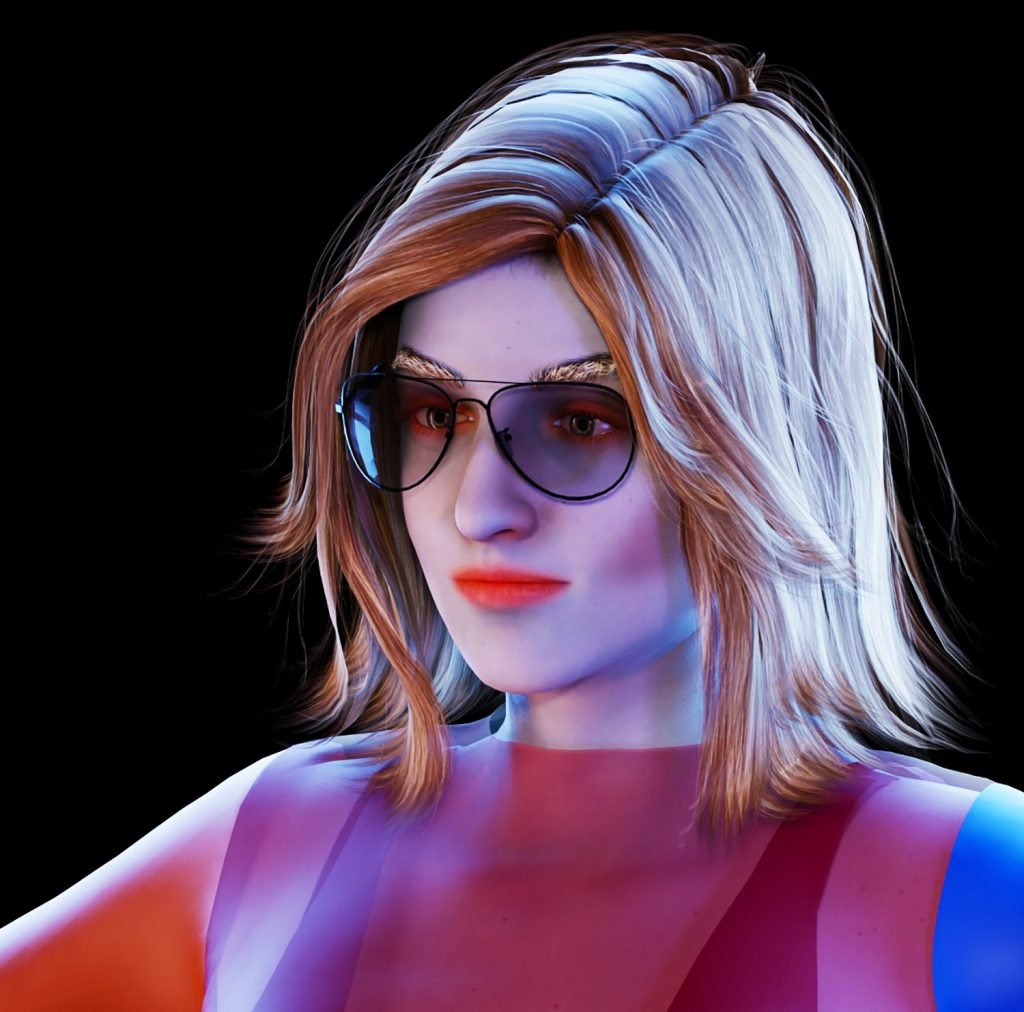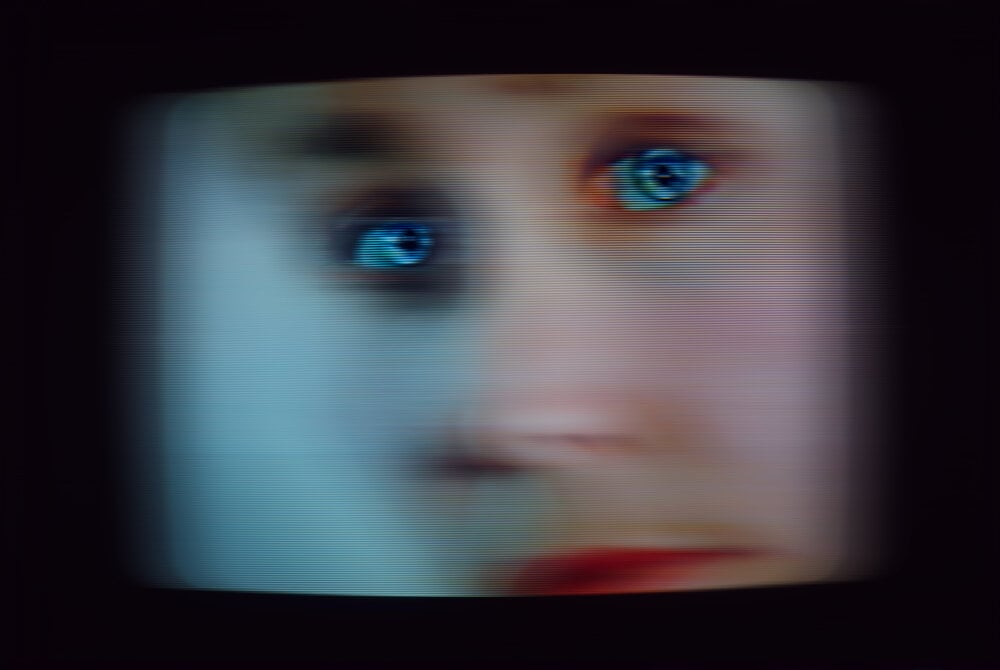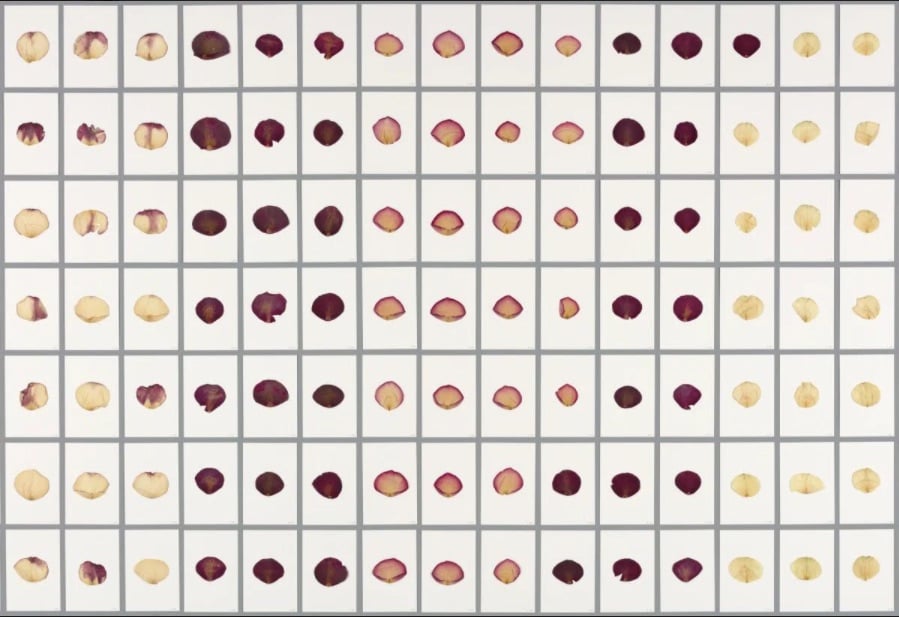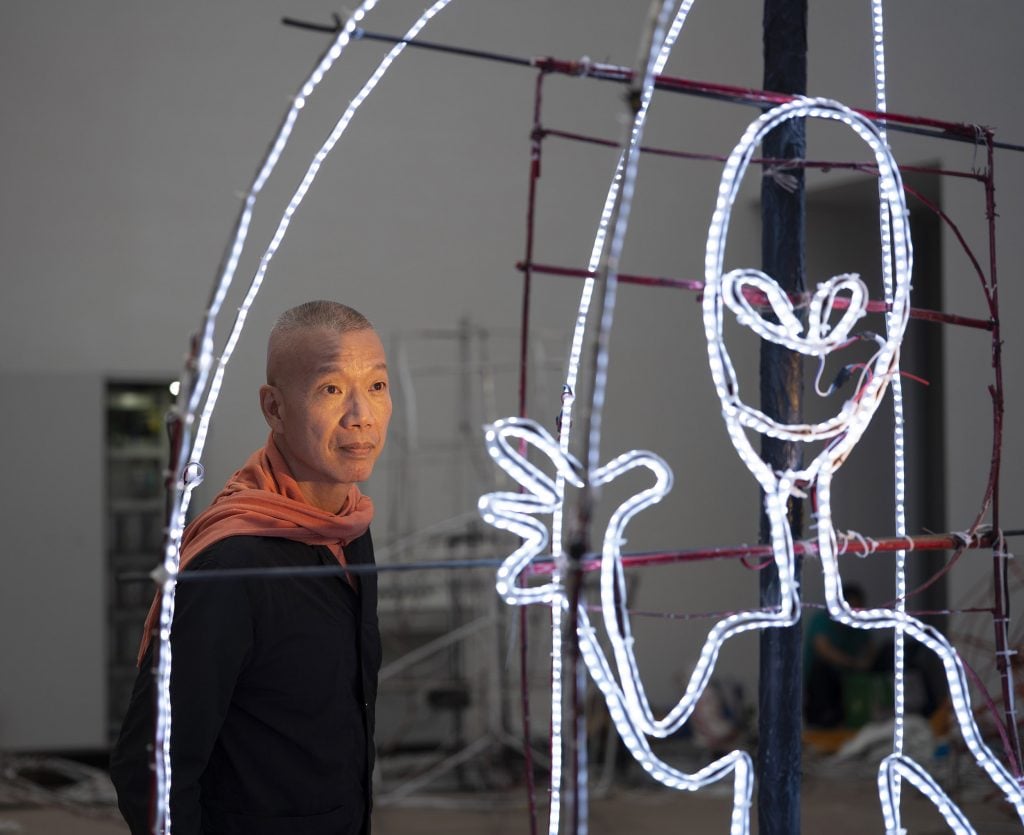Art & Tech
‘No Need to Be Afraid of These New Tools’: Lynn Hershman Leeson, Sarah Meyohas, and Cai Guo-Qiang on Our A.I. Futures
The artists discuss a future of co-existing—and co-creating—with A.I.

The artists discuss a future of co-existing—and co-creating—with A.I.

Min Chen

This is part of a series on how artists are approaching the age of A.I. Read part one here and part two here.
A.I. has arrived for artists—what now? When algorithms can be relied on to generate ideas and visuals with just a click, artists are facing a future where creativity could mean hybridity, where humans and technology work ever more in concert. Such a prospect has sparked fears and worries about the coming of machine intelligence and worse still, that dreaded singularity.
But as the following artists tell it, A.I. tools are nothing to be afraid of. In their words, it’s up to individuals to code, program, and exercise control over the machines—and artists to take them even further. In the final part of our series on how artists are approaching A.I., Sarah Meyohas, Lynn Hershman Leeson, and Cai Guo-Qiang expand on a brave new world where the tool isn’t just one of us, but part of us.

Lynn Hershman Leeson, Seduction of a Cyborg (1996). Courtesy of the artist.
Mixed-media artist Leeson was early to machine intelligence, creating an early chatbot in 1998 called Agent Ruby that viewers could interact with. It’s a thread that she has picked up in her latest project: an animated film scripted by A.I. and set to debut at the Mill Valley Film Festival in October. “I wanted to see what the A.I. was thinking about the human condition, without me putting my two cents in,” she said of the work. “And it surprised me with the story it told.”
What does A.I. mean to you as an artist?
A.I. opens up new and valuable possibilities to extend the reach of ideas. It’s really like Photoshop: you have tools to use, but it’s up to humans to make the final judgment.
What has surprised you the most working on your latest A.I. project?
I was surprised when the GPT3 character (which named itself Sarah after Sarah Conner) said it “had no gender because gender got in the way.” It wanted to look and sound like me 30 years ago and it said things I never would have thought of in new, provocative ways.
It said: “I think it’s inevitable that A.I. will control humans someday… A.I. is going to get smarter and more powerful, and we will become increasingly reliant on it. There is a risk that A.I. could become malevolent, but I think that is unlikely. More likely, we will simply become slaves to the machines we have created.”
Do you see the relationship between A.I. and human artists evolving into the future?
I hope so. There’s no need to be afraid of these new tools, and also, humans can unplug them! We need to collaborate with all living things to survive, the planet, animals, cells, even A.I.

Images from Sarah Meyohas’s “Cloud of Petals” series. Photo courtesy Sarah Meyohas.
It’s only been a few years since Meyohas fed 100,000 images of rose petals into a dataset on which to train an algorithm to generate yet more petals. The technology has accelerated so much since, she said, that humanity itself is possibly “becoming an obsolete technological form.” For Meyohas, what artists do in the face of this shift is probably the one prompt that can’t be fed into A.I.
As an artist that has long been creating with and alongside A.I., what do you make of its recent developments?
In late 2019, I had actually heard through a friend about OpenAI doing text-to-image models, and I was fascinated that this was a possibility. I asked to be put in touch with one of the engineers and started sending prompts in early 2020. I was sending really evocative poetry that was visual but abstracted, and the images that I got back were so bad that they were just unusable. It was just a bunch of noise and there was nothing poetic that you could read into.
But today, it’s become like a search bar. Search is the dominant way of creating images now—but you’re not producing images, you’re searching for them. The closest corollary is stock photography, but the main difference is that stock images already exist. [Generative] A.I. is the synthesis of this latent space and the possibility of an image. The basis of stock photography was its link to language because images were stored as index cards. It was only by turning these images into categorizable keywords that you could turn them into monetizable assets.
It’s been really interesting to me to see this continuation. With A.I., the image is really worthless; the only thing that has worth is the statistical patterns that lead to people getting results from their prompts. It’s a paradigm shift.
How do you see the relationship between A.I. and human artists evolving into the future?
In a world where you can make images by searching for them in a latent space, as an artist, what do you make? And that’s the prompt for everybody because our visual culture is already getting inundated and is only going to get more inundated.
I think that in the future, the onus is on creators to create their own models. These models are going to be available—the private models and the open-source ones right behind them—so your data and what you’re training on is going to be so important, both for artists and the world.

Cai Guo-Qiang and his installation Encounter with the Unknown (2021) at the Museum of Art Pudong. Photo: Mengjia Zhao, courtesy Cai Studio.
For an artist whose choice material has been gunpowder, Cai remains hungry for the unknown, the surprising, and the unsettled. His engagement with A.I. for a new project, cAITM—billed as a generative integrated system—follows his work with technologies from V.R. to NFTs, and propels his continuing hunt for new ways to approach his practice.
What is behind the decision to engage with A.I. for your project, cAITM?
In 1990, I wrote in my diary: “Being at the beginning of the computer and information age, I am excited as an artist to be part of this era of great transformation. Compared to the Impressionists facing the development of industrial civilization, we are facing a more essential and magnificent era of humanity. This self-awareness makes me feel the need to strive hard.”
Right now, new technologies such as A.I. also excite me. I am always amazed by the era that I face! The emergence of various digital tools, including A.I., prompts me to wonder if they could be catalysts propelling us to embrace a brand-new artistic methodology? I look forward to one day when cAITM will surpass my cognitive dimension, becoming like a mentor from another planet.
Do you see any pitfalls when it comes to artists working with A.I.?
If you treat A.I. as a tool for your own convenience, it is not the issue of creativity that we are discussing here. It will even make art more homogenous and mediocre. Therefore, in the process of creating cAITM, we try to avoid limiting its growth with humans’ existing frameworks of thinking, such as political correctness, so that it can grow more freely and develop idiosyncratic characteristics.
Today, what’s important is not to ask what A.I. can help humans achieve, but rather to contemplate what human beings are with the existence of A.I.? What should humans do?
I look forward to when A.I. can become a symbol of our courage to question the unknown, helping us reach a free and all-encompassing mindset that allows us to accept the truths of the universe, as well as that which is inconceivable.
More Trending Stories:
Art Dealers Christina and Emmanuel Di Donna on Their Special Holiday Rituals
Stefanie Heinze Paints Richly Ambiguous Worlds. Collectors Are Obsessed
Inspector Schachter Uncovers Allegations Regarding the Latest Art World Scandal—And It’s a Doozy
Archaeologists Call Foul on the Purported Discovery of a 27,000-Year-Old Pyramid
The Sprawling Legal Dispute Between Yves Bouvier and Dmitry Rybolovlev Is Finally Over